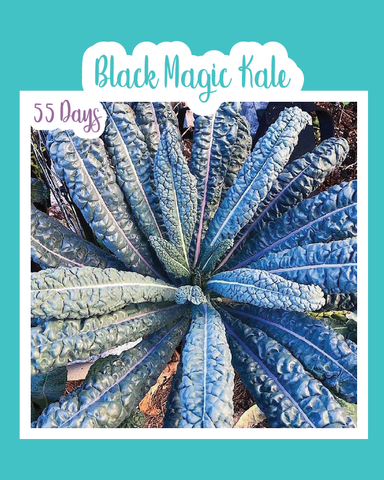
Lacinato Kale
Seed Count: Approx. 200 seeds
Days to Maturity: 65 Days
Description: Dark blue-green to black leaves often have a heavily crinkled texture, which inspires one of its many common names, dinosaur kale. The flattened leaves are perfect for making kale chips. This kale dates back to the 18th century Italy, which is why it’s also called Tuscan kale. Thomas Jefferson grew it in his garden at Monticello. Plus, Lacinato not only looks good but tastes delicious too. It’s one of my favorites because bugs usually leave it alone.
How To Grow
Sowing: Since kale thrives in cool weather and sweetens with frost, it grows best as a fall crop. Plant 3 seeds in a cluster, 1/2" deep and 16-18" apart in rows 2-3' apart about 3 months before first expected frost. Thin to the strongest plant when the seedlings emerge. Kale appreciates very rich, moist soil that drains well, since they taste best when allowed to grow quickly.
Growing: Keep weeds controlled and conserve moisture by applying mulch. Keep the soil evenly moist, but stop watering after the first frost. Kale is very easy to grow, but can be bothered by cabbage aphids.
Harvesting: Harvest baby leaves as soon as they grow big enough for salad; harvest bigger leaves as needed. Use a scissors or a knife to cut the leaves, to avoid tearing the stems. To harvest the entire plant, cut it off an inch above ground level. To make the fresh leaves last longer in the fridge, dip the stems in water after cutting them; they should stay fresh for up to a month. Kale also freezes well. Expect to harvest well after frost, since most varieties of kale can survive freezing temperatures. Kale must overwinter before producing seeds; since it survives cold well, a thick layer of mulch should protect it sufficiently, even in colder climates. In the spring, allow it to flower and go to seed. Some of the leaves can still be harvested for eating without damaging the seed development. The tall stalk will develop pods that ripen from the bottom up; wait until the pods turn light brown before harvesting them.




